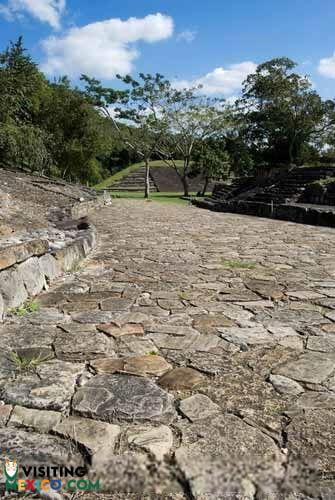IMPORTANT FACTS
he eleventh largest state in Mexico, Veracruz boasts an area of 27,730 square miles. Its population is 7,712,364, making it the third-most populous state in Mexico. Veracruz was granted statehood in 1823. The state is well known for its mixed ethnic population and a considerable population of indigenous groups. The busy port of Veracruz fostered the influx of peoples from abroad, their cultural practices, and their cuisine that all add to the state’s melting pot charm. The capital of the state is the city of Xalapa-Enriquez, which is the state’s second-most populous city and revered for its parks and culture.
GEOGRAPHY AND LANDSCAPE
The state of Veracruz is shaped like a crescent. It is situated between the Gulf of Mexico and the Sierra Madre Oriental mountain range. The state is noted for its extremely diverse topography that ranges from coastal plains to dramatic highlands. The state’s highest peak is also Mexico’s highest mountain, the stratovolcano known as Pico de Orizaba and it is situated on the state’s border with Puebla. The volcano is deemed dormant but is not extinct. There are more than forty rivers and tributaries that flow from the mountains down to the valleys toward the Gulf of Mexico. The state’s major rivers include the Actopan River, Canzones River, Rio Blanco, Acuatempan River, and Rio de la Antigua, but the many significant waterways that are essential to the commerce and industry of the state. Not surprising, the extremes in topography result in extremes in climate; the snow-covered mountains are at one extreme and the tropical coastal areas are at the other. The state is filled with forest lands—especially the evergreen tropical forests it is famous for. Although many of the forest lands have been destroyed due to industry, there are thirty-one protected areas where native botanical species thrive. Some of the animals that make their home in Veracruz include spider monkeys, ocelots, pumas, toucans, alligators, and iguanas.
The earliest pre-Columbian civilizations that thrived in Veracruz were the Olmecs, Huasteca, and Totonac. Later groups to dominate the region were the Aztecs, Texcoco, and Tacuba peoples. The Spanish arrived in Veracruz in 1518. A year later, Cortes founded the city of Vera Cruz. As with other areas where Europeans entered, disease decimated indigenous populations which helped to enable their eventual subjugation. The Europeans imported many Africans as slaves into Mexico, especially through the large port of Veracruz. In 1601, the Spanish relocated Veracruz to its present-day location. Insurgencies plagued the people of the region, as elsewhere in the country, as ingenious populations and slaves rebelled against the Spanish landholders. Even after Mexico gained independence, there were many battles fought by warring political factions throughout the state. After the end of the Mexican Revolution, Veracruz entered a relatively stable period largely due to its economic growth.
Veracruz is an important oil-producing state for Mexico. It also enjoys a successful textile industry. In terms of agriculture, the state is well known for crops like sugarcane, corn, tobacco, and various citrus fruits. As with many other nearby states, raising livestock is an important endeavor for regional peoples.
TOURISM
The state’s tourism industry is primarily based in the city of Veracruz, but the capital is also revered for its cultural attractions. Eco-tourism occurs in the tropical regions as well as the coffee-producing sections of the state. Archaeological sites like the ruins of El Tajin, a city that reached its zenith around the tenth century A.D., are also popular among visitors to the state. Veracruz is widely revered for its culinary influences and culture, both of which attract tourists to its confines.

OTHER THINGS TO SEE AND DO IN VERACRUZ
- El Tajin: This UNESCO World Heritage Site is a Totonac city that was founded in 100 A.D. Its ruins contain many ceremonial buildings that were used for ritual and sport.
- La Costa Esmeralda: This beautiful coastal stretch is popular among tourists for its beaches and recreation.
- Catemaco: The county and city of the same name is a popular eco-tourism destination. Situated near the Gulf of Mexico, the area is famous for its waterfalls, lakes, and birdwatching.
- Xalapa: The capital boasts many cultural and historical attractions. Its colonial architecture college-town atmosphere makes it a popular destination among international travelers. Its Museum of Anthropology is one of the nation’s most important museums.
- The Veracruz State Art Museum: This museum of art is located in an old monastery in the city of Orizaba.
- Carnival: While Carnival is celebrated throughout Mexico, the city of Veracruz is a popular destination during this time for its celebrations that take place on the beach.
Plan a trip to Veracruz
















